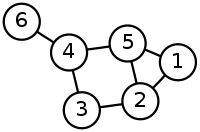Social Network Analysis: how to gain insight into social media networks
Discover what is happening online around you and what impact you are making
- Article
- Data Science

If your organisation is active on social media and you want to optimise the online strategy, you need to know what is happening online around you and the impact of your activities. Social Network Analysis can help you with that. We explain what it is, how it works and the purposes it serves.
Social Network Analysis provides insight into the (usually complex) networks on social media in one go. This method provides insight into the influence of people, the connection between people and the range of information.
Why Social Network Analysis?
There are several methods for analysing social media data. Which method is suitable depends on the question you want to answer. For example, if you want insight into the topics that are discussed online, you can combine this method with other Social Listening methods.
The main advantage of Social Network Analysis is that you can gain insight into what is happening on a large scale on social media in a relatively short time. You can see at a glance the cohesion between many different actors (for example, the communication between many Twitter users). This is not possible with other methods. For example, you can map a network of online friends or followers and see how information moves through a network of social media users.
These insights are particularly useful for organisations' online marketing, communications, and PR departments. For example, when a lot of customer interaction takes place on social media or in case social media is used for the visibility of the organisation, for example with online campaigns. Social Network Analysis can also make a difference for organisations for which public opinion is important.

How does it work?
Network Analysis is based on the field of mathematics that studies the properties of graphs. By means of a graph structure you can model relations between 'objects'.
A graph (network) consists of a collection of points (usually called nodes, vertices or actors ) some of which are connected by lines. These lines are often referred to as edges, links or ties and represent relationships between the points.
Below is a graph with six nodes of which for example node 6 is connected to node 4 through an edge:

here are many structures that can be presented as a graph. Like a schematic road map with the distances between places or data traffic to and from servers.
When we research social media, we talk about Social Network Analysis, because we map and measure relationships between people, groups, and organisations.
What can you do with Social Network Analysis on social media?
You can also present an online network as a graph, where social media users represent the nodes. The relationships between the nodes (the edges) are characterised by friendships or communication.
By analysing a network you can find out, among other things:
- Whether there are different 'social media bubbles' (clusters)*;
- Who are the most influential people within the network;
- Who fulfill important roles in the network, namely persons:
- who bridge the gap between different networks/clusters;
- who form important hubs within a network/cluster;
- who are the most 'popular' people (influencers) based on the number of followers/friends, how someone is tagged or how often their content is shared;
- who are activators are because they actively pass on or discuss information.
*Clusters are groups of people who mainly communicate with each other within that group, but hardly communicate with people in another group. For example, Data Science lecturers could be sharing knowledge with each other, and Data Scientists could be sharing experiences in daily practice, however no information is shared at all between lecturers and practice. Another example is polarisation in political discussions in which social media users mainly communicate with like-minded people.
3 uses of Social Network Analysis
1. Social Network Analysis as the basis for your strategy
The insights you gain from the above analysis are valuable input for your marketing, PR, communication or information strategy. This way you can find out how often your brand or another topic is discussed and by whom. But also which clusters of social media users are out there and whether influencers or activators are involved.
2. Insight into the reach of your social media campaign
You can also map the reach of a social media campaign. Who shared the campaigns with whom and who played an important role in this?
3. Controlling a PR crisis
Another example is the way negative information spreads on social media during a PR crisis. For example, you can find out which people have a major influence on the distribution of that information. This way you know better whom to address and you can consider working with influencers or activators.
Practical Cases
Do you think the above applications sound interesting? Then you are probably wondering what this looks like in practice. We will soon explain it to you step by step based on two current practical cases: the much-discussed developments surrounding the Corona virus and Super Tuesday.
Case: public opinion on Twitter about the Corona measures
The Corona measures are a much discussed topic on Twitter. The crisis team also tries to maintain the legitimacy for the choice of certain measures among the public. How can Social Network Analysis be used for this?
Former colleague Anika Batenburg was a Data Science Consultant at Digital Power
Anika has a PhD in the field of online communities. She is an enthusiastic researcher with knowledge of statistics, research design, online networks, and automatic text analysis. She is interested in the complete picture, and therefore likes to think along with the organisation on a strategic level.
Receive data insights, use cases and behind-the-scenes peeks once a month?
Sign up for our email list and stay 'up to data':